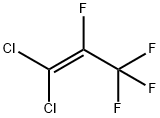
1,1-Dichloro-2,3,3,3-tetrafluoroprop-1-ene synthesis
- Product Name:1,1-Dichloro-2,3,3,3-tetrafluoroprop-1-ene
- CAS Number:2804-55-9
- Molecular formula:C3Cl2F4
- Molecular Weight:182.93
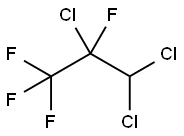
422-47-9
0 suppliers
inquiry

2804-55-9
14 suppliers
$95.00/1g
Yield:-
Reaction Conditions:
with tetrabutylammomium bromide;potassium hydroxide in water at 60; under 1500.15 Torr;Large scale;
Steps:
4 Example 1
A tube reactor made of a fluorine-based resin with an outside diameter of inch and a length of 30 m (with internal volume of 1 L) in which a resin static mixer manufactured by NORITAKE CO., LIMITED was installed, was used as the reactor. The reactor was installed in a constant temperature bath, and a reaction temperature was set to 60° C. The KOH aqueous solution of 20 mass % was supplied to the reactor at a flow rate of 4550 g per hour, and a 234bb mixed solution in which tetra-n-butylammonium bromide (TBAB) was mixed to be 1 mass % was supplied to the reactor at a flow rate of 1500 g per hour. Next, a pressure in the reactor was regulated to be 0.2 MPa by a pressure-regulating valve installed at an outlet of the reactor, and the reaction was continuously carried out for 8 hours. 234bb used in the example 1 is 234bb (with a purity of 99.8%) obtained through the distillation in the manufacturing example 1. The product obtained in the reactor was extracted into a tank with jacket at an atmospheric pressure and whose temperature was kept at 60° C. The extracted product was turned into gas to be taken out from a gas phase part, and recovered in the tank with jacket cooled to -20° C. The recovered product was turned into gas at 60° C. to be sampled, and then the GC analysis was carried out.
References:
US2018/297918,2018,A1 Location in patent:Paragraph 0111; 0112

422-56-0
1 suppliers
inquiry

2804-55-9
14 suppliers
$95.00/1g
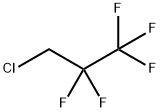
422-02-6
1 suppliers
inquiry

422-56-0
1 suppliers
inquiry

2804-55-9
14 suppliers
$95.00/1g
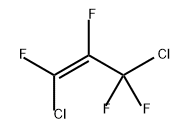
111512-50-6
0 suppliers
inquiry
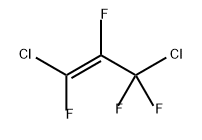
111512-61-9
0 suppliers
inquiry

684-06-0
0 suppliers
inquiry

2804-55-9
14 suppliers
$95.00/1g

815-16-7
0 suppliers
inquiry

2804-55-9
14 suppliers
$95.00/1g